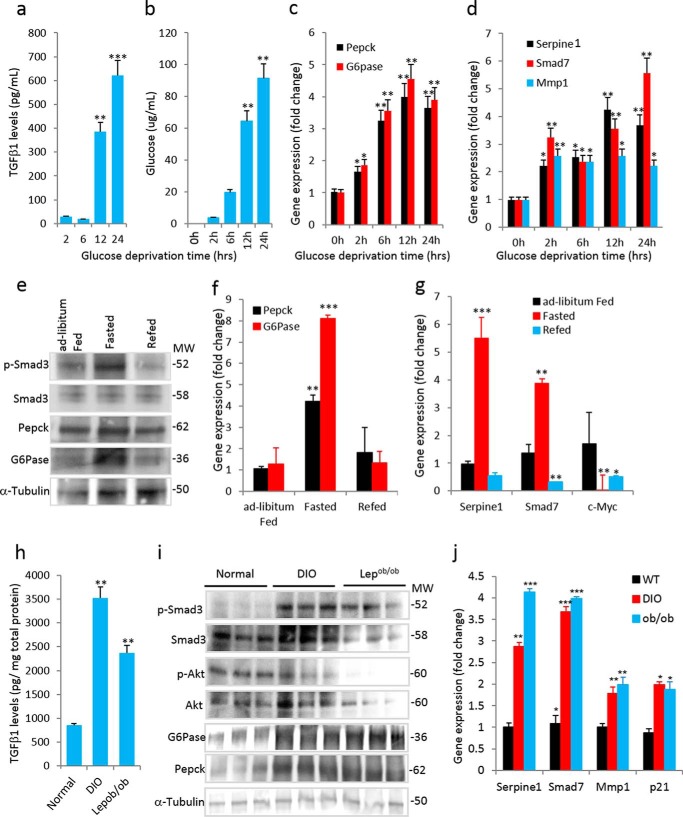FIGURE 1.
Increased TGF-β1/Smad3 signaling is associated with normal and deregulated hepatic gluconeogenesis. a and b, levels of TGF-β1 secretion (a) and glucose production (b) in media from HepG2 cells (in triplicate) at indicated time points post-glucose deprivation. c and d, mRNA expression of gluconeogenic genes (c) and TGF-β1/Smad3-signaling target genes (d) during the glucose-deprived state of HepG2 cells (in triplicate). e, Western blotting analysis of p-Smad3, total Smad3, G6Pase, and PEPCK along with levels of tubulin in liver from mice that were fed ad libitum, fasted, or refed after a fasting period (pooled samples from n = 5 mice/group). f and g, mRNA expression of gluconeogenic genes (f) and TGF-β1/Smad3 signaling target genes (g) in ad libitum-fed, fasted, and refed mice liver (n = 5 in each group). h, TGF-β1 levels in liver tissue homogenate of normal chow-fed, DIO, and leptin-deficient (Lepob/ob) mice (n = 6/group). i, Western blotting analyses of p-Smad3, total Smad3, p-Akt, total Akt, G6Pase, and PEPCK along with internal control (tubulin) in liver homogenates of normal, DIO, and Lepob/ob mice. j, mRNA expression of TGF-β1/Smad3 signaling target genes in normal, DIO, and Lepob/ob mice livers (n = 6/group). All the values present here are averages, and error bars represent S.E. *, p = <0.05; **, p = <0.01; and ***, p = <0.001.

